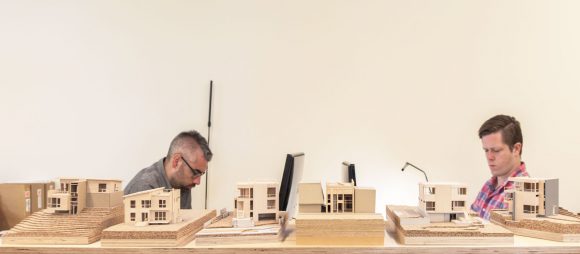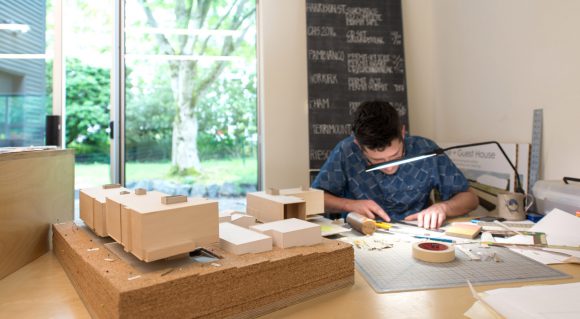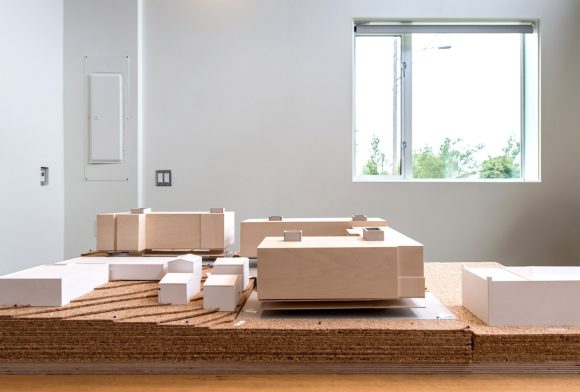
[All photos by BUILD LLC]
While we construct a lot of models here at the BUILD World Headquarters, most of them tend to be presentation models — they are built once the project is mostly designed. We do this for a couple of important reasons. As sophisticated as digital modeling has become, we still find it a useful design gut-check to see the architectural solution physically. Physical models are also an excellent communication tool with clients, consultants, and trades people, and they help as design references around the office for future projects.

Recently we started a different sort of model for different purposes. The First Central Station project that we’re currently working on is a large, complex project which includes 3 mixed-use, multi-family buildings with internal plazas and courts on a 72,000+ square foot site in Seattle’s Central District. The site spans an entire city block and slopes approximately 24 feet over the course of its length. The proposed design included five levels of residential units over ground floor commercial spaces over four levels of parking garages that have varying degrees of overlap. In a nutshell, the geometric relationships of the project take some time to get your head around. In order to best understand the project, the design team decided to construct a physical working model. This working model is a tool to indicate and clarify spaces and relationships.

Cale and Connor in our office have been hard at work on a model which allows the various building blocks of the project to be removed, thereby revealing lower levels, plazas, courtyards, and the various levels of parking garages. The model base is constructed of built-up layers of cork which correlate with the topography of the site. The parking garages and ground floor retail are constructed of gray museum board to indicate concrete, and the buildings are constructed of basswood. White museum board is used for the adjacent structures which are existing, most notable is Washington Hall to the east. Each distinct material is an important visual move in the success of a working model like this.

As well as we understand the site, it’s even useful for the design team to reference the model during meetings and design charrettes. Where the working model really pays off, however, is bringing consultants and tradespeople up to speed on the project. There is an immediate connection people have to a physical model that doesn’t necessarily exist with digital models. You can spin around a highly refined 3-D model all you like on the flat-screen size of your choice, but it still doesn’t accurately convey information like a physical model does. A physical model in the middle of the conference table also holds people’s attention longer and with greater focus. A revealing of the model progress at a recent design meeting was so successful that we’ve decided to post two quick videos showing removal of the building blocks. The first shows the site from the northeast perspective (14th Ave & E Spruce Street):
The second video is shot from the southeast perspective (14th Ave & E Fir Street):
In each clip, buildings 1, 2, and 3 are removed to reveal the parking garage levels below. The upper parking garage levels are then removed to reveal the lower parking garage levels. We’ve found that this simple sequence of taking the model apart and putting it back together gives observers a quick understanding of the site and structures.

The First Central Station model will continue to evolve as a tool. Because it’s not built to the highly refined level of a presentation model, the buildings can be modified and the site can be manipulated as the project develops. And since it’s not what we would consider a precious model, you might even see us schlepping it around town to our various meetings.
Cheers from Team BUILD





